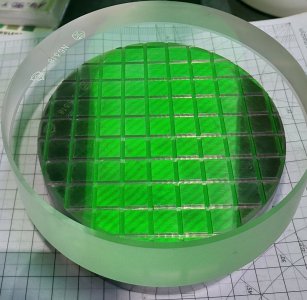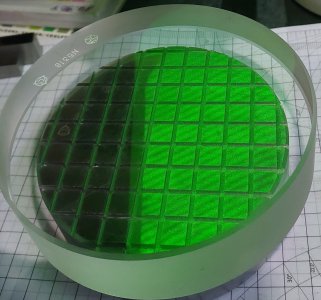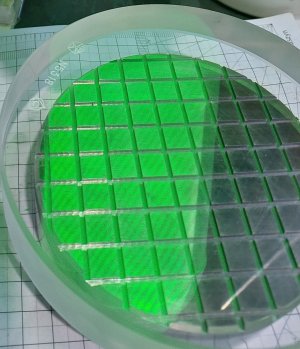I'm currently making a set of 3 small mild steel flat laps. They were faced on a lathe, grooved, then surface ground to be flat to within a micron. Then 3 plate method is being used to improve their flatness and surface finish.
However, as the flatness is getting better it becomes difficult to measure progress using anything else than an optical flat. But the surfaces are not reflective enough. So my question is, does anyone know some method to improve surface reflectivity during lapping before moving to the smallest grit size. Will buffing ruin the flatness? Perhaps some way to polish it?
I'm currently using a 14~9 micron grit that results in moderately reflective surface. I tried switching to 3~1 micron and it improved the reflectivity a bit, but not hugely so in the short time I tried it. How long does it take to switch grits like this? This is silicone carbide, not diamond abrasive grit BTW.
However, as the flatness is getting better it becomes difficult to measure progress using anything else than an optical flat. But the surfaces are not reflective enough. So my question is, does anyone know some method to improve surface reflectivity during lapping before moving to the smallest grit size. Will buffing ruin the flatness? Perhaps some way to polish it?
I'm currently using a 14~9 micron grit that results in moderately reflective surface. I tried switching to 3~1 micron and it improved the reflectivity a bit, but not hugely so in the short time I tried it. How long does it take to switch grits like this? This is silicone carbide, not diamond abrasive grit BTW.




